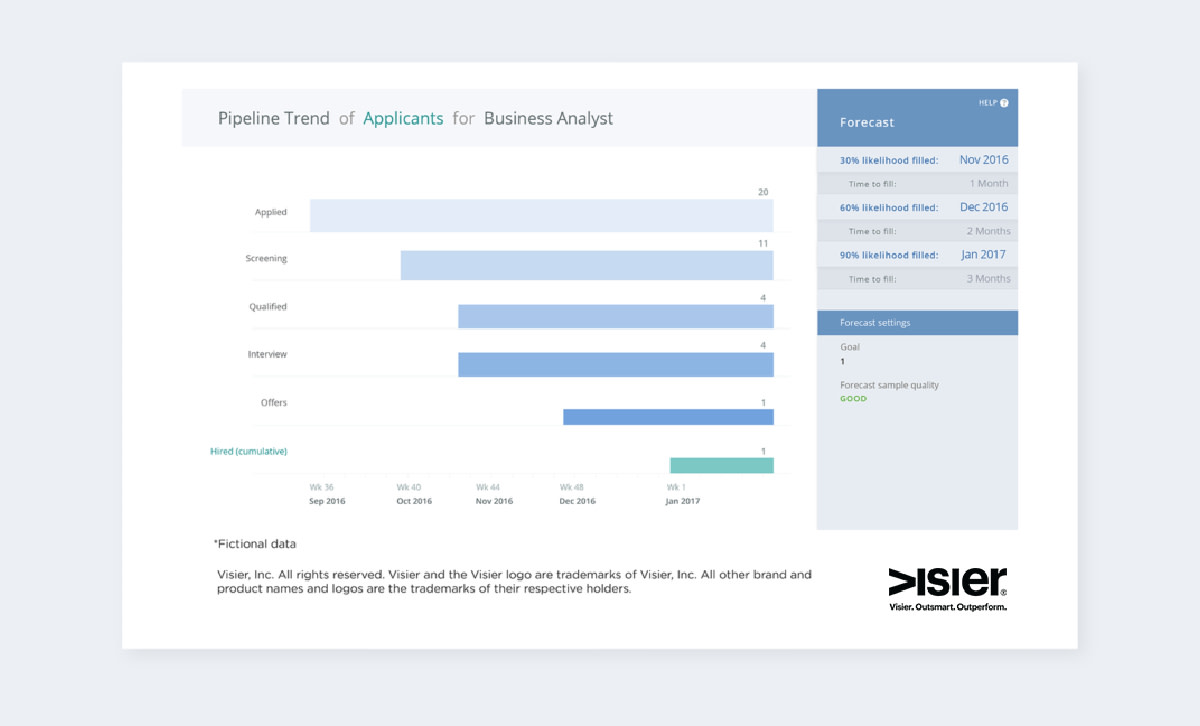How to Hire More Diverse Talent Using Workforce Analytics
To advance diversity into the workplace, use a scientific approach that reveals the facts about your recruitment process, particularly the red flags.

Workplace diversity and inclusion is a multi-faceted issue, one that can only improve if there is a strong commitment from organizations for positive change. Over 150 global CEOs – including John Schwarz, CEO and co-founder of Visier – are leading the way by signing the CEO Action for Diversity and Inclusion Pledge, which “aims to rally the business community to advance diversity and inclusion in the workplace by working collectively across organizations and sectors.”
The CEOs that have signed this pledge recognize that taking action is about being more thoughtful in granting everyone equal access to employment opportunities and also opening your doors to a wider range of talent. Building more diverse and inclusive workplaces may be just the very thing you need to succeed in today’s business climate.
Research has shown time and time again that organizations with diverse and inclusive workforces win:
Ethnically diverse companies are 35% more likely to have financial returns above national industry medians and gender diverse companies are 15% more likely to do the same (McKinsey)
Companies with more women on the board statistically outperform their peers over a long period of time (Catalyst)
Inclusive teams outperform their peers by 80% in team-based assessments (Deloitte Australia)
(Catalyst also has a great infographic showing 39 reasons businesses should invest more in diversity and inclusion).
Talent Acquisition leaders have taken note. Jobvite released their annual Social Recruiting Survey and revealed that 43% of survey participants (made up of recruiters and HR professionals) rated diversity as somewhat or very important when making a hiring decision.
As I’ve mentioned previously, data-driven recruitment is the difference between making these decisions on gut feeling and making them based on facts. To build more diversity into your workforce, use a scientific approach that reveals the facts about your recruitment process, particularly the red flags you need to watch out for:
Red Flag #1: Ignoring Your Current Employee Population
While it may be tempting to go after all types of people and hope something sticks, the reality is, different types of people will require different marketing programs to attract them to you as an employer. Some of these initiatives might be more expensive than others. This is why it’s important to take a scientific approach to building the right strategy for your Talent Acquisition efforts.
How to fix it using workforce analytics:
The first step is to identify where your diversity gaps are. Use analytics to look at your current employee population and examine headcount by gender, race, veteran status, etc. This process will reveal insights such as whether your organization needs more minority races in executive leadership or maybe, more women in STEM roles.
Once you know where you stand, you can work with business leaders to determine which diversity goals are more important and allocate budget towards these initiatives accordingly.
Red Flag #2: Lack of Diversity In The Hiring Funnel
When the hiring managers are pressuring recruiters to hire critical positions as quickly as possible, it can be easy to forget about adding diversity in your funnel. A data-driven recruiter continuously monitors the funnel to see whether diversity increases or decreases as candidates move through the pipeline.
How to fix it using workforce analytics:
Use analytics to keep track of diversity ratios — i.e. for gender, ethnicity, and veteran status — in aggregate for every stage in the hiring funnel. This will make it clear where in your hiring process you lose your diverse candidates.

Red Flag #3: Failing to Match Interviewers to Candidates
We all have unconscious biases that can influence our judgement whether we them to or not. When these blind spots creep into hiring decisions, it can impact a diverse job candidate’s chances.
How to fix it using workforce analytics:
There is some research into the reduced bias seen when the diversity of a job interviewer is matched to the candidate’s. For example, a female interviewer matched to a female candidate. It’s an experiment worth trying at your organization. Keep a close eye on whether it improves your hiring rates. The data will show whether this is a practice you should try for all open positions — not just the ones you’re focused on getting diverse candidates for.
Red Flag #4: Measuring Diversity As A Blanket Number
It’s not enough to say ‘diversity went up by 10%.’ When improving workforce diversity is one of your business objectives, it’s essential to keep track of hiring success rates by diversity group. Why?
How to fix it using workforce analytics:
If the goal is to hire more veterans, you need to be able to show how many were successfully hired. Workforce analytics technologies can easily separate your diverse candidates by group and show you how successful you were in each category.
Red Flag #5: Forgetting to Look at Post-Hire Data
How diverse candidates that are hired fare in the long-term can actually reveal important insights about your hiring practices. How long these employees stay at the company, how they perform, and how soon they receive promotions can tell you a lot about the quality of your diverse hires.
How to fix it using workforce analytics:
If you have all your pre-hire and post-hire data systems connected in one platform, you can regularly analyze the performance of diverse employees and keep an eye on promotions that they received (as well as when in their tenure they achieved these). These insights will help you identify high quality and diverse employees. Use this information to recreate the steps you took to hire them in the first place, so you can continuously attract and hire diverse and high potential employees.
Why A Holistic View On Diversity Recruiting Matters
Mollie Lombardi, co-founder and CEO of Aptitude Research Partners said, “organizations realize that what they do in hiring today will impact their success in the future in two important ways: their ability to execute as a business and their ability to continue to find and attract great talent.”
Lombardi’s research on strategic talent acquisition reveals that recruiting can no longer rely on just operational metrics, such as time-to-hire and conversion rates, to measure and deliver strategic impact.
“Companies need to address a more holistic view of every stage of the candidate’s journey, from candidate to applicant to new hire.”
As the mistakes above have shown, talent acquisition analytics can reveal many important insights at all stages of your recruitment process, as well as after it. From beginning to end, a data-driven approach creates a more diverse hiring funnel and a much stronger workforce.


